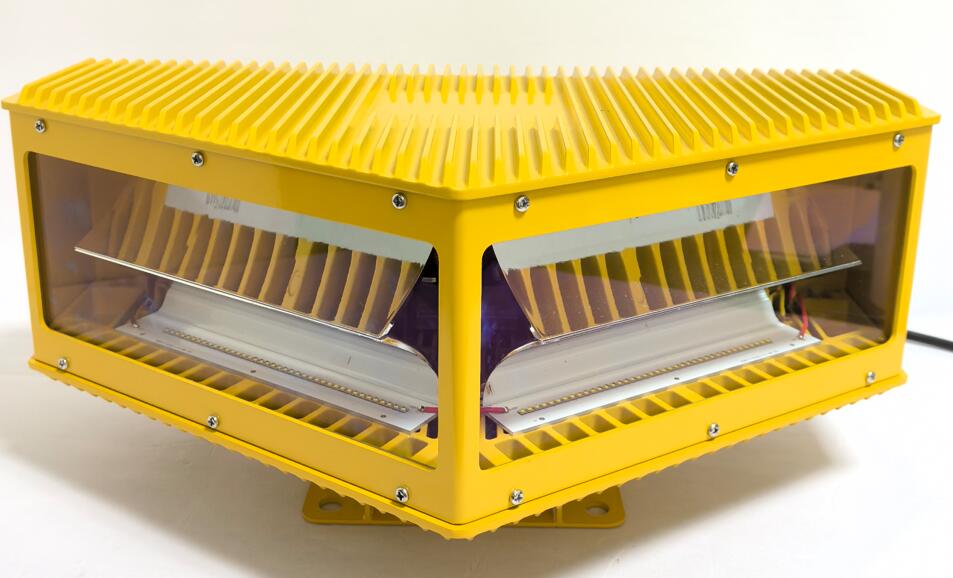Chimney Aviation Warning Lights: A Crucial Beacon for Industrial Airspace Safety
In industrial environments, chimneys serve essential roles in expelling exhaust gases from factories, power plants, and refineries. Yet as these chimneys often rise hundreds of feet into the air, they pose potential hazards to low-flying aircraft. To mitigate this risk, the installation of chimney aviation warning lights has become an international standard—ensuring these towering structures are clearly visible to pilots day and night.
What Are Chimney Aviation Warning Lights?
Chimney aviation warning lights are high-intensity lighting systems installed on tall industrial chimneys to alert approaching aircraft of their presence. These lights are part of aviation obstruction lighting systems, designed to mark man-made structures that penetrate navigable airspace.
Typically mounted at the top and sometimes at intermediate levels of the chimney, these lights provide 360-degree visibility and operate either in flashing or steady modes, depending on the applicable aviation authority's regulations.

Why Chimney Aviation Warning Lights Are Essential
Industrial chimneys are often located in areas away from major cities, such as remote factories, thermal power stations, or chemical plants. Despite their secluded locations, these structures can still pose significant risks to aviation, especially helicopters, agricultural planes, and drones that operate at lower altitudes.
| chimney aviation warning lights |
Chimney aviation warning lights serve several vital purposes:
Preventing aircraft collisions with tall structures
Meeting aviation safety regulations
Protecting both aviation and ground personnel
| chimney aviation warning light |
Allowing safe flight operations in industrial zones
Without proper lighting, a tall chimney can be virtually invisible at night, especially in poor weather or remote locations.
Types of Chimney Aviation Warning Lights
The type of aviation light installed on a chimney depends on factors such as the chimney’s height, location, and surrounding air traffic conditions. The most common categories include:
1. Red Obstruction Lights
Flashing or steady red lights
Used at night
Common models: L-810 (low intensity), L-864 (medium intensity)
Suitable for chimneys near populated areas due to reduced light pollution
2. White Strobe Lights
High-intensity flashing white lights
Operate during daytime or both day and night
Reduce the need to paint chimneys with aviation colors (red/white bands)
3. Dual Lighting Systems
Combine white lights for daytime and red lights for nighttime
Ensures full compliance across changing visibility conditions
Often used on chimneys exceeding 500 feet
These systems ensure the chimney is marked according to local and international aviation requirements.
Key Features of Modern Warning Lights
Advancements in technology have transformed chimney aviation warning lights into highly efficient and reliable systems. Key features include:
LED Technology: Provides high brightness with low power consumption and longer lifespan
Automatic Light Sensors: Adjust intensity or switch lights on/off depending on ambient light
Weatherproof Enclosures: Protect against rain, heat, wind, and industrial pollutants
Remote Monitoring Capability: Allows operators to track performance and receive fault alerts
Low Maintenance Design: Especially important for hard-to-access chimney tops
These features are particularly valuable in industrial settings where reliability and minimal manual intervention are critical.
Installation Guidelines for Chimney Lighting
Proper installation of chimney aviation warning lights is essential for their effectiveness. Some standard practices include:
Top Light Placement: Always install a beacon at the highest point of the chimney
Intermediate Levels: For very tall chimneys (typically over 150 meters), lights should be installed at intervals along the shaft
Power Supply: Can be grid-connected or solar-powered, depending on site access
Synchronization: In facilities with multiple chimneys or stacks, light systems should be synchronized to flash uniformly
Backup Systems: Battery backups ensure operation during power failures
These guidelines ensure that lights are clearly visible from all angles and distances.
Regulatory Compliance
Compliance with civil aviation authority regulations is non-negotiable for industrial facilities. The FAA, ICAO, and local aviation bodies define clear standards for structure marking and lighting.
Some of the key parameters that chimney aviation warning lights must meet include:
Minimum luminous intensity (in candela)
Flash rate (e.g., 20-40 flashes per minute)
Light color (red or white depending on usage time)
Beam pattern (horizontal and vertical angles)
Failure to comply can result in operational fines, shutdown orders, or worse—accidents due to poor visibility.
Challenges and Solutions
Chimney lighting comes with its own set of technical and environmental challenges:
1. High Altitude Maintenance
Solution: Use long-life LED systems and remote diagnostics to reduce the need for frequent inspections.
2. Extreme Weather Exposure
Solution: Employ corrosion-resistant enclosures and heat-resistant components, especially near high-temperature exhaust outlets.
3. Limited Power Infrastructure
Solution: Integrate solar-powered systems with high-efficiency battery storage for autonomous operation.
These solutions help ensure continuous lighting performance under industrial conditions.
Environmental and Community Considerations
Although safety is the top priority, chimney aviation warning lights should also consider surrounding communities and ecosystems. Excessive lighting can cause light pollution or disturb local wildlife. To address this, modern systems use:
Directional optics to focus light only where needed
Adjustable brightness settings
Aircraft detection technology that activates lights only when necessary
This reduces the environmental footprint of industrial lighting systems while maintaining compliance and safety.
Integration with Industrial Control Systems
Advanced lighting systems can be integrated into broader industrial monitoring platforms. This allows facility managers to:
Monitor all aviation lights in real time
Schedule preventive maintenance
Generate compliance and audit reports
Automatically alert staff to malfunctions or outages
Such integration simplifies operations and ensures lighting systems remain functional around the clock.
The role of chimney aviation warning lights goes far beyond mere illumination. These beacons act as silent sentinels that protect the skies above industrial facilities. As industries grow and infrastructures rise taller, marking these vertical assets becomes an aviation imperative. With modern, energy-efficient, and intelligent lighting systems, facilities can uphold safety, meet regulations, and contribute to a more secure airspace for everyone.
